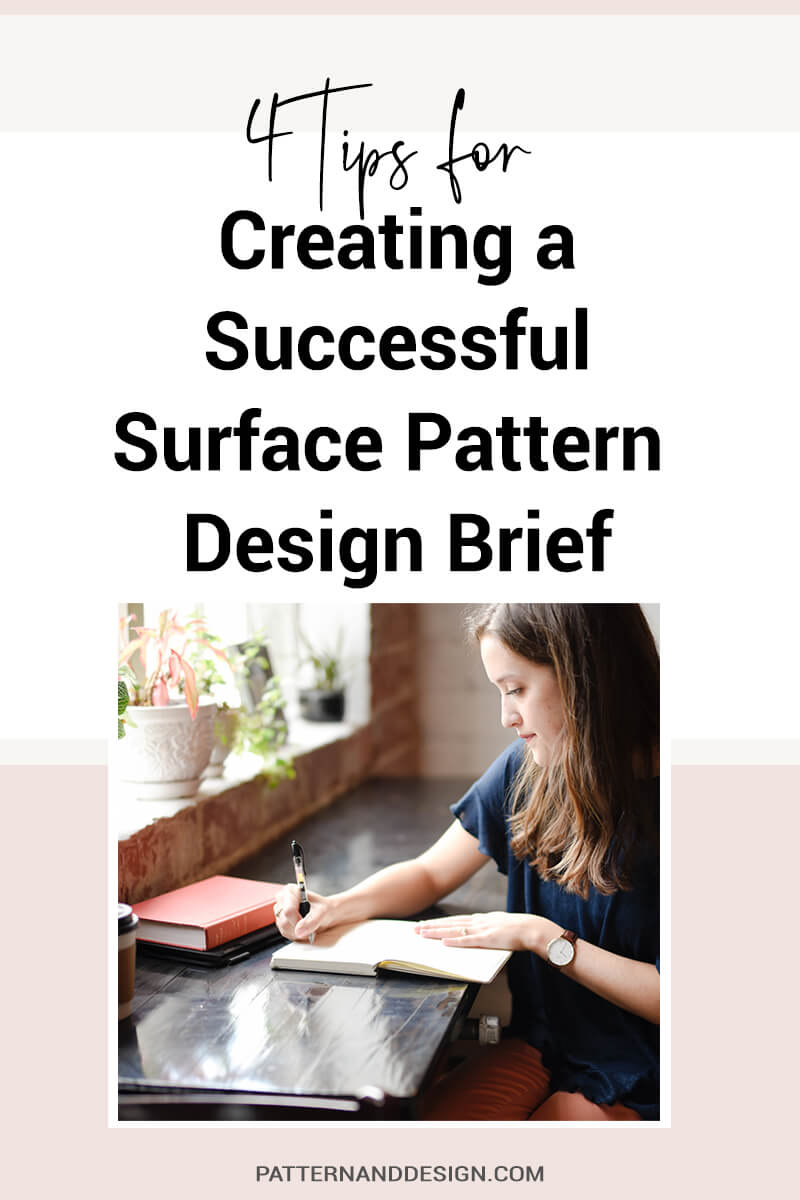learn about all things surface pattern design including the creative design process, being a successful creative entrepreneur & stepping into the mindset of a successful designer
welcome to the pattern design blog
blog
The
Categories
Popular
4 Quick Tips For Creating A Successful Design Brief
4 Quick Tips For Creating A Successful Design Brief
In order to become a successful and adaptable surface pattern designer, it’s important that you learn how to follow and write a design brief. This is not only essential if you’re designing for a client but also if you’re creating your own design ranges. By having a clear understanding of your brief before you start you will save time in the long run by being able to arrive at a successful outcome more easily. Before we have a look at 4 quick tips for creating a successful design brief, let’s break down exactly what a brief is.
A brief will give a set of instructions that designers will use as boundaries from which to work within. The number of instructions or details and the format in which it is given will vary from one brief or client to another, however, it should consider the following list.
1. Know your target market
Before you start designing you should have a firm understanding of the market you are designing for. Do some research to find out more about your customer or client. Your brief should reflect who you are designing for.
In order to help you gain a really good understanding of your target market, it’s useful to create a customer profile.
Your customer profile should consider:
- What does this person need, want and desire?
- Where do they live?
- What do they do?
- What is their gender?
- What is their age?
Have a really good understanding of who they are and think about them when you’re designing your product or design.
2. Know what you’re designing
Once you a firm understanding of who you are designing for, the next step is to determine exactly what you are designing. You have some knowledge now from your target market research of the general sector you are designing for, now it’s time to find out more details about exactly what the products is.
Finding out what your design will be used for is really helpful to know before you commence designing. It will determine factors such as the colour palette, scale and motifs used.
Some questions to ask yourself or your client:
- What is the colour palette?
- How many colours can be used within the design?
- Is there a set repeat type to be used?
- Are colourways required?
- Is this a one-off design or is it part of a range?
- Will you be required to create coordinates?
- Is there a set repeat size and scale they’d like to use?
3. How will the design be produced?
The next step is finding out how your design will be produced as this will determine your design process. For example, if you are creating a print design then it’s important to know if it’s going to be digitally printed or screen printed. This will determine how many colours you use and how you create your artwork. If your design is being screen printed make sure you are aware of maximum repeat sizes and the screen printing process that will be used.
How your design will be produced will determine how you go about the design process so it’s really important to have a clear understanding before you start so you can design accordingly.
4. What is your timeline?
It’s really important to know the timeline of a project before you begin. This may even determine whether you decide to take the job or not. If you are designing for a client, find out if certain stages of the design need to be completed by certain dates. When does the design need to be completed by? When you know your deadlines, it’s a great idea to work backward so you know when you need to finish each stage of the design process.
To recap, make sure you take the time to have a very clear understanding of the brief you are designing for before you begin. Don’t forget to ask yourself or your client lots of questions and make sure you keep referring to the brief throughout the design process as this will help you arrive at a successful result more quickly.

Want to create another revenue stream by turning your art into surface pattern designs?
Get the free guide
Get my FREE Surface Pattern Design Starter Guide